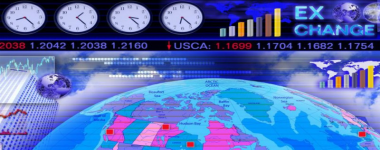The main theme in global monetary policy last week was the continuing rise in the U.S. dollar as investors adjust to the widening split in policy cycles among major advanced economies.
So far, policymakers appear relaxed about the dollar’s appreciation against a broad spectrum of currencies – not just against the euro, yen and sterling, but also most emerging market currencies – as its rise boost the weakest economies, has been fairly gradual and long-awaited.

At Thursday’s press conference in Naples, Italy, Mario Draghi, president of the European Central Bank (ECB), said the change in exchange rates is the result of differing business cycles and thus in monetary policies.
The euro dropped further to around 1.25 to the dollar at the end of last week, a level not seen since August 2012 when the euro zone was mired in recession with the ECB cutting rates its rate by 25 basis points in July to 0.75 percent.
Haruhiko Kuroda, governor of the Bank of Japan, echoed Draghi’s sentiment, saying the yen’s weakening was broadly positive for the country’s economy as long as it reflected the underlying fundamentals.
The only change in policy rates last week was by the National Bank of Romania, which continued its easing cycle to help boost inflation and demand.
The other five central banks that met last week – the ECB, the Reserve Bank of India, the Central Bank of Iceland, the National Bank of Angola and the National Bank of Rwanda – all maintained their policy rates.
Through the first 40 weeks of this year, the 90 central banks followed by Central Bank News have cut their policy rates 50 times, or 13.5 percent of all policy decisions, up from 12 percent at the end of the first half and 12 percent at the end of the first quarter.
Meanwhile, rates have been raised 37 times, or 10 percent of all policy decisions, up from 9.3 percent at the end of June and 8.7 percent at the end of March.
LIST OF LAST WEEK’S CENTRAL BANK DECISIONS:

